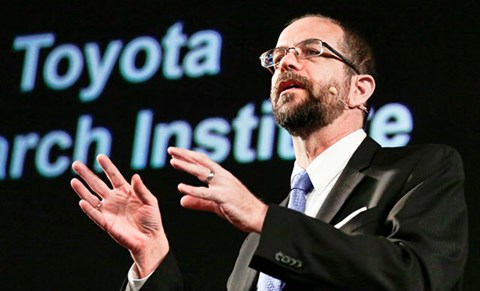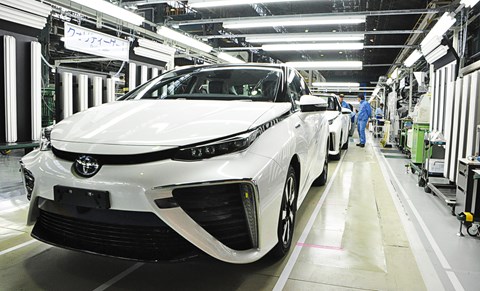► Do autonomous cars spell the end of driving?
► Toyota has invested $1bn in research
► ‘If a human can make the decision, a computer can too’
It’s the stuff of nightmares for The Terminator’s Sarah Connor: the sentient car that makes moral judgements, and responds to scenarios far better than any human ever could. If it sounds like sci-fi, it’s not; it’s fast-approaching science fact.
Deep-learning frameworks – a form of artificial intelligence – will evolve today’s semi-autonomous cars into self-driving vehicles that can handle all traffic scenarios, in all environments, by learning from experience rather than being pre-programmed for every eventuality. Crucially, these machines will also learn to make the big calls, like choosing between hitting the bus queue or the stray dog.
Toyota has ploughed $1bn into the US-based Toyota Research Institute (TRI), with autonomous vehicles being a key focus. Intel recently acquired Altera, a maker of programmable logic devices with automotive applications, for $16bn.
Cars that think for themselves
Experts at both companies are focused on developing autonomous cars that not only adhere to set protocols – keeping between white lines, for instance – but react to unpredictable scenarios too.
‘Imagine debris falling off a truck,’ says TRI’s Dr Gill Pratt. ‘Should the car think of the debris like another car, and avoid it? Kind of, but the debris might break apart like lots of cars. Should it think of it as a pedestrian? Kind of, but the debris might initially be moving far faster than a pedestrian. Part of our work will focus on augmenting machine learning, and measuring the robustness of systems for scenarios we haven’t yet thought of.’

UK-based firm i-Abra partners with Altera in developing deep-learning frameworks for autonomous cars. ‘Machine learning has been around since the dawn of computing,’ says managing director Ian Taylor. ‘The computer mimics neurons, creating artificial neural networks. Ultimately you’re trying to replace human sense and action with artificial intelligence by acting on data collected from the car’s sensors, cameras, radar and maybe audio.’
Taylor takes a pragmatic view of the scenarios autonomous cars will face. ‘If bricks fall off a truck, the worst-case scenario is to stop the car as quickly as possible,’ he says. ‘But the cars need that experience, that’s why Google is sending cars into the real world to acquire millions of hours of data, with a driver ready to re-take control. The car can learn from experience, then share that learning across a fleet that’s constantly connected. The moral maze is presented every day to humans – do you hit the deer, or the tree? – but if a human can make the decision, a computer can too.’
AI: a brave new world
Taylor admits that machines are fallible, but far less so than humans. ‘The fully autonomous car would not only have more experience than a 17-year-old driver, but also his father,’ he argues. ‘Autonomous cars will save fuel, cut journey times, and saves lives.’
Nonetheless, Taylor predicts fully autonomous cars are at least a decade away, his sentiments echoed by Pratt: ‘We’re maybe 95% of the way to full autonomy, but that doesn’t mean the last 5% will be as easy,’ says Pratt. ‘It’s like climbing a mountain, where the final ascent is the hardest. And if just a small percentage of the trillion miles Toyotas cover annually is very difficult driving, it’s still many, many miles.’
For now, for much of the time, humans do it better. But there’s no doubting we’re on borrowed time.

How it works
1) As the autonomous Toyota follows a lorry laden with bricks in lane one of the motorway, so the lorry’s unsecured payload begins to topple into the road. If it stays in its lane and brakes hard, the Toyota calculates it will plough into the bricks. But swerving to avoid them holds its own dangers…
2) Up ahead on the hard shoulder, a family have broken down and are just leaving their car to reach safety. The autonomous Toyota is as likely to hit the stranded car as the bricks. Meanwhile, another car is fast-approaching from behind in the middle lane. If the Toyota moves into the middle lane and the other car maintains its speed, the two will collide.
3) The Toyota quickly assesses the situation. From machine learning over millions of miles of autonomous testing, it knows to rule out both moving onto the hard shoulder and remaining in its lane, where an impact is inevitable…
4) Instead, it knows that switching into the middle lane is the best option. If the fast-approaching car has driver-assistance systems, it will adjust its speed; even if it doesn’t, the driver has time to react. The best human drivers would take the same course, but every autonomous car should.
Read more CAR tech news here